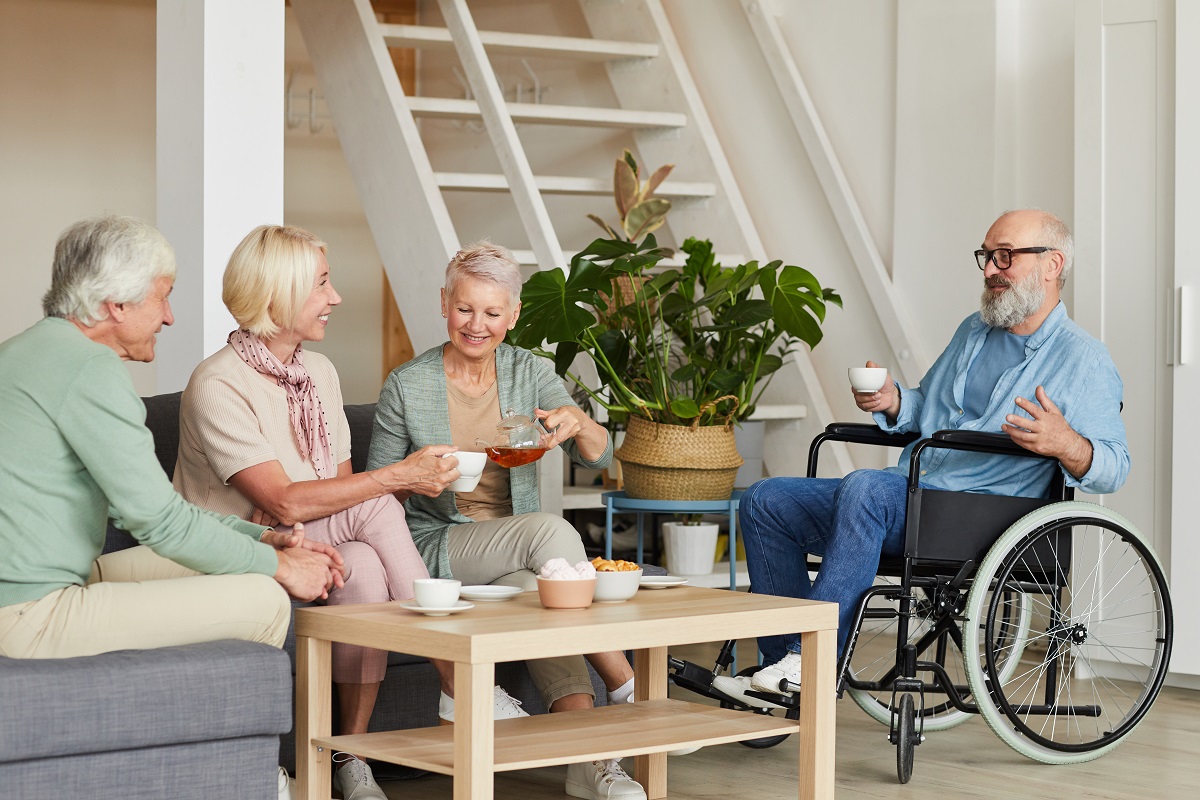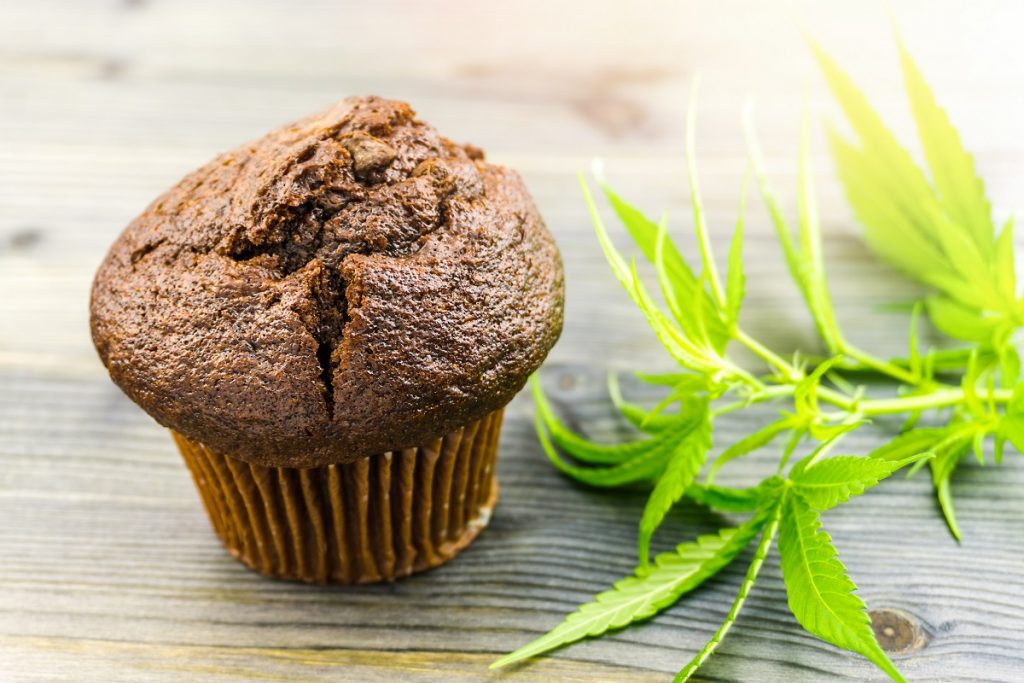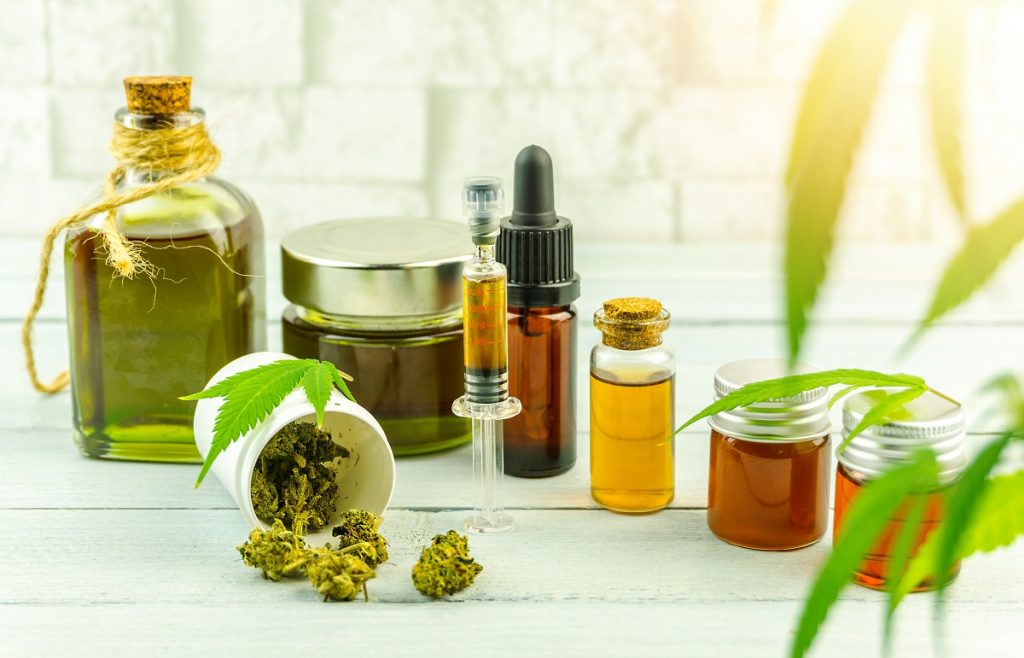
After your health evaluation is completed and the physician approves you, you could be approved the same day. Some states have a same-day approval based on the physician’s recommendation, and the patient can download and print their card right away
Seniors are the fastest-growing segment of medical marijuana users nationwide. As more Baby Boomers enter retirement age and develop chronic health conditions, many look for a more natural alternative than prescription pain medications like opioids.
It is illegal to cross from your state into another state with medical marijuana. If you are a cardholder, if you are traveling on vacation to another state, call the medical marijuana authority there. They may accept your medical card so that you can purchase products to use while you are on vacation. You will not be able to bring any “leftover” products home with you.
If you were a young adult in the 1960s, it might be reasonably safe to assume at some point you tried cannabis. It was the culture then. A sign of rebellion against prohibition, and if you went to Woodstock, you are probably smiling right now.
Baby Boomers have had a love-hate relationship with cannabis. Some have continued to use it recreationally throughout their lives. Discreetly. Cautiously and always fearful of the legal reprisal. Some Boomers stopped taking cannabis entirely as the state, and federal consequences of using a prohibited drug became more punitive.

And then something happened. The dangers of opioids that many internists and holistic practitioners had warned us about for years came to light. Americans with chronic diseases and debilitating health symptoms were encouraged to use opioids. Only to find later that they are not only ineffective for long term relief of inflammation, pain, and other health conditions; they clinically increase pain over time.
Now we are in a new era in America. One that puts the needs of patients with chronic health problems first. At the time of writing, 34 states have legalized medical marijuana use, under doctor supervision, and for qualifying health conditions. For the first time in more than forty years, many seniors are looking at cannabis as a personal wellness option.
Are you thinking about trying medical marijuana for your health conditions or symptoms? Here are some how-to tips to get started.
Unless you happen to know that your family doctor or primary care provider (PCP) is staunchly against medical marijuana, even though you live in a state that has legalized medical marijuana, it doesn’t mean that every physician agrees with it. Some do not.
However, most physicians will be willing to help you evaluate if medical cannabis is a good option for you. That may include having a checkup and a physical from your family doctor first. And a review of your current prescription medications, supplements, diet, and exercise habits. Some physicians may also want to run a cardiovascular stress-test if they feel there may be heart or hypertension health concerns.
Even though your doctor may not be credentialed or licensed to recommend medical cannabis for you, the check-up will help. Every patient is required to have a health evaluation as part of the medical card application process. If you have a recent physical with no concerns, that can help expedite your MJJ card health evaluation.
Every state that has implemented a medical marijuana program limits the program to patients with specific health conditions. The state provides a list called “qualifying health conditions.” If you have one of the diagnoses or chronic symptoms on that list, you can apply for your medical marijuana card. If you don’t have one of the conditions, you are not permitted to apply.
Medical marijuana programs are meant to provide additional options for patients—specifically, individuals who have tried many different ways to manage their symptoms without success. If pain medications have stopped working for you, and your doctor has told you that no higher safe dose is possible, medical cannabis may be the next logical step for pain relief.

Many resources provide a list of the qualifying health conditions. However, states are continually updating the eligibility criteria for patients. We update our qualifying health conditions and state laws frequently to make sure we are providing accurate information for patients. Use our search feature. Find your state. Then review the list of current qualifying health conditions before you proceed. Find out if you can get your medical card, according to state regulations.
This is the most important decision you will make (other than starting the process to get your medical card). What kind of cannabis do you like? If it has been a long time or have never tried marijuana before, you may not know what products to choose.
Don’t worry because medical cannabis dispensaries provide friendly, trained staff that is there to help. But a good place to start is to think about how many steps you want to take before you consume medical cannabis.
You have probably seen other patients using a vaporizer with cannabis oil. They look a lot like nicotine vapes, and some of them are reusable. You simply charge your vaporizer and replace the cartridge. This is convenient for patients who want to use daytime cannabis oil for vaping (mild Sativa that can also boost energy levels) and a nighttime variety (an Indica blend). For patients who have difficulty sleeping because of pain, an Indica strain of cannabis can be a welcome relief.
Does a glass pipe or bong sound interesting? When you use an accessory for smokable medical cannabis, it may be enjoyable for you. It is also fast-acting when inhaled. The one consideration about using bongs or glass pipes is that they require daily maintenance. You have to clean your accessory every day to avoid the growth of fungus or mold. And to prevent the resins from the cannabis from clogging the pipe.
Patients who have respiratory conditions may not want this type of intake method. There are many other ways you can use medicinal cannabis other than smoking or vaping it. It is a matter of your personal preferences.
Edibles are extremely popular, particularly with seniors. Why? They are easy to use. Simply open the container, and you can eat a gummi, hard candy, or even a lollipop. When you start using edibles (if they are legally available in your state), you can learn how many are recommended as a dose. It is trial and error.

You may consume one edible, wait for about thirty minutes, and that is sufficient to provide the symptom relief you are looking for. Other people may require more than one edible. The advantage of choosing edibles is that the effects tend to last about 4-6 hours, depending on the potency of the product you buy. And most edibles are THC + CBD infused so that patients can gain the anti-inflammatory and other benefits of CBD. There are also breakfast bars and packaged ‘baked’ goods available at most dispensaries.
When you want to control the dose of cannabis you are receiving carefully, tinctures are the best option. You simply open the bottle and use a measured dropper to apply 1-3 drops under your tongue. That area of the mouth has blood vessels that are close to the surface. Sublingual uptake works quickly as the cannabis is absorbed into the bloodstream faster.
Some types of tinctures are mildly flavored. Others have no flavor at all or can taste very much like medicine. If you are sensitive to medicinal flavors, try to find a pleasant and natural flavor additive. Or consider adding a few drops to your morning coffee or tea. It will blend right in, and you may start to feel the relief or effects within 15-20 minutes.
The next step is to find a physician who can complete the health evaluation to apply for your medical card. Some states allow primary care physicians to make a recommendation for their patients. Physicians must be specially licensed with the state medical marijuana program before they can provide health evaluations.
Marijuana Doctors make it easy to find qualified and licensed physicians to provide your medical marijuana health evaluation. Simply visit our Doctor search page then click on your state on the map. You will be provided with a list of physicians ready to schedule an appointment with you.
If you would like to learn more about each physician, or whether they offer at-home telemedicine appointments for medical marijuana cards, click on their profile. You will find more information about the practice, the physicians’ experience, or specialty health conditions they treat. Some physicians have received reviews from patients (and that can be helpful when you are trying to decide which doctor to choose).
You will find a place to schedule your appointment online with that physician. You can send them a message, and someone from the doctor’s office will respond to confirm your in-office or online medical marijuana health check. Patients can also see how much each physician charges for health evaluation. Its 100% transparent and accurate information to help you find the best marijuana doctor for your needs.

In some states, you are required to create a patient account with the medical marijuana authority. Creating an account does not cost anything. You may have to do this before your appointment with the physician. Or you will be required to do it after you have received the recommendation from your physician.
The registration fee with the state medical marijuana program varies. In some states, the fee can be as high as $100. But in most states, joining the medical marijuana patient registry only costs $50 per year. When you renew your medical marijuana card, you will have to pay that fee again to remain on the registry and keep your medical card valid.
Not every patient that applies for a medical marijuana card is accepted. The first approval will come from the doctor who is conducting your health evaluation. That physician will be interviewing you and reviewing your health history, current medications, and diagnoses to see if medical cannabis is a safe option for you.
If the physician feels that medical cannabis will not help your symptoms, or that it may pose a risk to you, the doctor will not recommend you. If that happens, you can seek another physician’s advice to see if they agree or recommend you to the state medical marijuana program.
Even if a physician approves you for the medical marijuana program, it is essential to know that the state review process may still decline your application. The medical marijuana authority individually reviews each patient application. If they are concerned, they will decline your application and notify you by mail or email of their decision.
In some states, there is an appeal process if you are denied. For other states, the decision is final, and there are no further steps you can take to become approved. Ensure you are providing accurate information and health records for your evaluation, for the best chance of approval for your medical marijuana card.
If everything went well, and you have finished the registration process with your state medical marijuana program, you will wait. Thankfully, most medical marijuana authorities process medical cards within 7-15 business days. It will arrive in the mail. Or (depending on the state), you will receive an email that prompts you to download a temporary card. You can print it, and then use that card immediately to visit a medical marijuana dispensary.
Which dispensary do you want to visit? Have you already been to one that you liked, maybe with a friend or a family member? In states where recreational or Adult-Use cannabis is legal, you can also purchase cannabis products from that retail store. However, most patients prefer to buy their medical marijuana from a dispensary that is licensed for medical cannabis.
There is a big difference between a recreational dispensary and a clinical, health, and wellness-focused dispensary. And one of those noticeable differences is how much time the dispensary staff are willing to spend with you. Because when you are just getting started, you have questions. And you don’t want to feel like the cannabis dispensary is “too busy” to answer those questions.
Another critical point to consider is that in many states, purchasing medical cannabis with a card means that you will pay a lower tax on products purchased from a dispensary. That discount may only be available in medical cannabis dispensaries (depending on state regulations vary by region).
You wouldn’t call your corner store to tell them you will be stopping by. So why would you want to call ahead to your medical marijuana dispensary? If it is your first time visiting that medical dispensary, you will need some extra help.
Medical cannabis dispensaries will require your medical marijuana card every time you purchase products. They will also keep a HIPAA compliant patient file for you. That file will indicate your current health conditions and record the types of cannabis you have tried. That way, as you explore more strains of marijuana, you can keep track of what “worked well” for you, and types of strains that didn’t deliver the relief you wanted.
When you call the dispensary, make sure that you let them know that you are a new cardholder and patient. They will schedule an appointment with you and designate a customer service representative that will help you get set up. That person will also review your wellness goals, answer your questions, and find the right intake methods (and accessories).
The nickname for experienced people who provide customer service at a medical marijuana dispensary. They are called “Bud Tenders.” And don’t be surprised if you end up seeing the same Bud Tenders over and over again. It’s like creating a friendship with concierge benefits. They are ready (and expect) to help you explore various strains and categories of medical cannabis until you find one that works for you.

The Bud Tender will also let you know how much you can purchase per month. That is the other reason why they create a patient profile for you in their system. It is illegal for them to sell you more than the state limit per month. And that includes every category, from smokable to edibles.
If they have an online ordering option, they may have an app that you can download to make browsing for different strains at home more accessible. Each product will have a description of the strain and the dominant effects. One of the benefits of downloading the dispensary app (if they have one) is that you will be notified if there is a senior’s special discount day or BOGO (buy one get one) offer.
Many cannabis types are appetite stimulants (this is good for patients who are undergoing cancer treatments or recovering from chemotherapy). Some strains do not have that “munchie” effect at all. Share your preferences with your Bud Tender. And remember to buy small quantities of different strains, as you learn which ones work best.
Now that you have your medical marijuana card and purchased your products, it’s important to review some of the safety rules. If you have decided to buy edibles, and you have children in your home (or grandchildren who frequently visit), make sure you are storing your cannabis in a place that they cannot see or access it.
Gummies are a particular concern. Some states are creating new laws that prevent the dispensaries from making gummies that look like children’s chewable vitamins. Or candies. This includes altering the shape of the gummy to avoid enticing children. All gummies are the same, right? Not. But that is exactly how minors may look at it. Keep them in your room or another secure location.
Personal protection. Sometimes for outdoor activities like hunting. And other times, just for sport. But if you have a handgun, or another type of weapon, there are some essential considerations you will need to review to make sure you are not breaking federal laws.
States may have legalized medical cannabis, but the federal government remains unwavering about the status of marijuana. The U.S. government classified cannabis as a Schedule 1 drug. Along with dangerous drugs like cocaine, heroin, and methamphetamines. If you feel like marijuana doesn’t belong with that class of recreational drugs, you aren’t alone. But that’s where federal laws stand at the time of writing.
Even if you live in a legalized state and you have a valid medical marijuana card, you may be charged with a felony offense if you have a gun on your person. Or in your home (along with your medical cannabis). The laws about gun ownership and cannabis at the federal level are absolute, but some states (like Oklahoma) have protected the right to carry arms for medical marijuana patients. Contact your state medical marijuana authority (.gov) website or call/email them for more information.

One of the great benefits of having a medical marijuana card and using cannabis for pain relief is patients’ lower cost. Compared to many prescription drugs, cannabis is much more affordable. And for a great number of patients, far more effective too.
Some states allow medical marijuana cardholders to cultivate their plants at home. If your state permits this, pay close attention to how many mature plants and seedlings you are allowed to have. Almost everyone wants to try growing cannabis if it is not against the law. And if you have a green thumb, this can be a good way to economize your medical cannabis use further.
However, growing cannabis can be complicated. And it can also be expensive in terms of water and electricity use. And don’t forget the amount of time it takes to grow cannabis seedlings into mature plants. It may not be worth the time, cost, and trouble for you to grow your medical marijuana at home especially when your dispensary is located about five minutes from your house.
When you are not getting enough rest, the kind of deep sleep that recharges your batteries and your immune system, you are putting your health at risk. For so many patients with chronic pain, having a “good night’s sleep” is hard to accomplish. Every time they move as they are sleeping, they can be woken up with pain, swelling or edema pressure, nausea, and other symptoms.
Indica strains tend to be ‘heavy-duty’ in terms of their effect. Naturally, the strength of the impact is determined not only by the strain (Sativa vs. Indica) but also by the potency. Medical cannabis dispensaries can have 0.03% CBD products that are not psychoactive (non-intoxicating). Or they can carry the full spectrum of potencies, within state regulatory limits. For some jurisdictions, this can be up to 30% THC. An average is between 17% to 23% THC content.
Let’s be honest. When you haven’t slept well for a long time, sometimes you just want a cannabis product that you can take for that “lights out” effect. If that is what you are looking for, talk to your Bud Tender about Indica strains for nighttime use. They will know exactly what to recommend for you.
No Information on MarijuanaDoctors.Com should be used to diagnose, treat, prevent or cure any disease or condition. You can view our Full Disclaimer here.